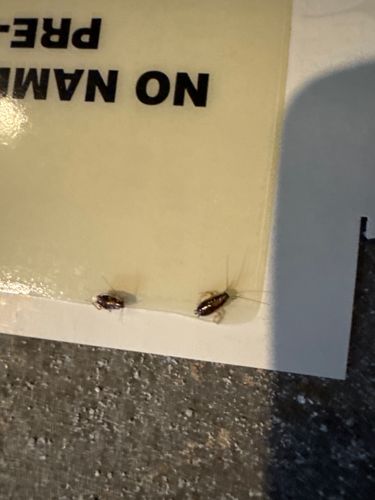German Cockroach
Scientific Name: Blattella germanica
Order & Family: Blattodea (Order), Blattellidae (Family)
Size: Typically 1.1 to 1.6 cm (0.43 to 0.63 inches) long.

Natural Habitat
They thrive in human dwellings, particularly in kitchens and bathrooms, preferring warm and humid environments, and are often found in cracks and crevices, behind appliances, and inside cabinets.
Diet & Feeding
Omnivorous scavengers, they feed on almost anything, including food scraps, grease, starches, sweets, pet food, and even non-food items like soap, glue, and toothpaste.
Behavior Patterns
Nocturnal and highly reproductive, female German cockroaches can produce multiple egg cases (oothecae) in their lifetime, each containing numerous eggs. They are known for rapid infestations due to their quick reproductive cycle. They tend to hide during the day and forage for food and water at night.
Risks & Benefits
Potential risks include being a vector for pathogens, exacerbating allergies and asthma, and contaminating food preparation surfaces. They are considered significant pests worldwide. There are no known benefits to humans or the ecosystem from their presence inside homes.
Identified on: 9/22/2025